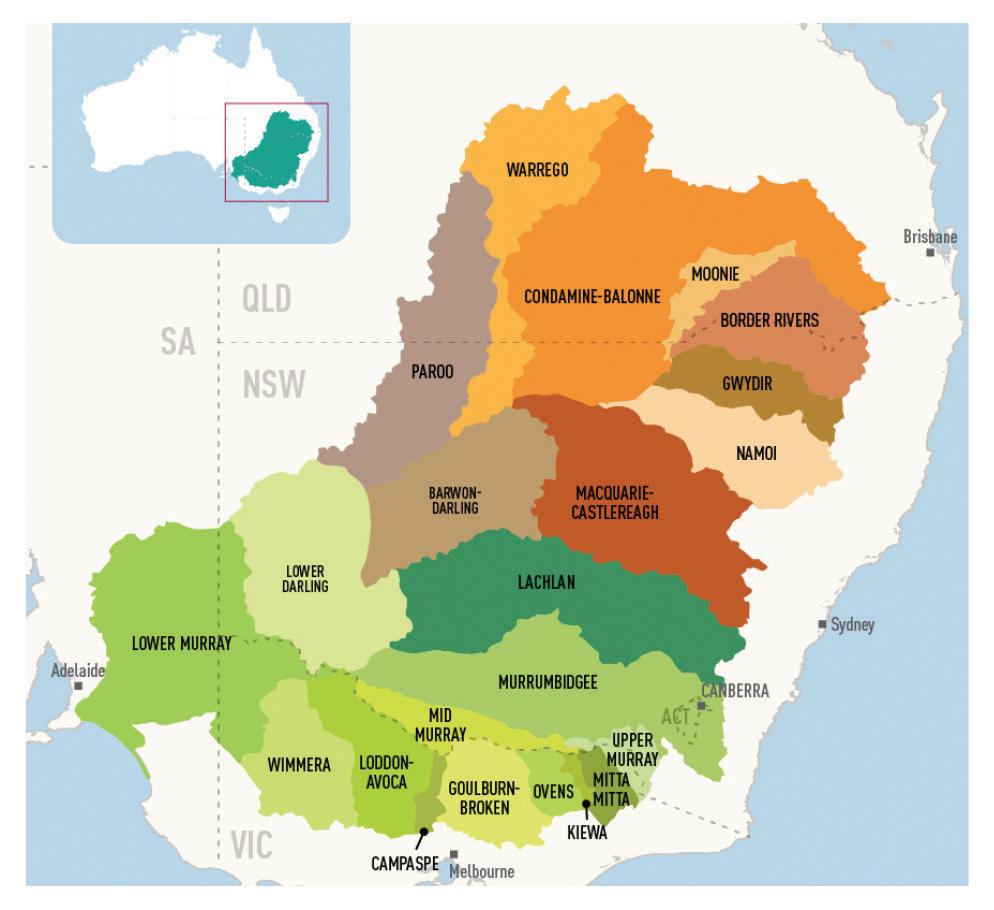
4 minute read
The Big Issue
AUDIT RECOMMENDS CHANGES TO BUYBACK PROCESS
SNAPSHOT
• The Australian National Audit Office released its audit of the Department of Agriculture, Water and the
Environment’s strategic purchases of water for the environment from 2016 to 2019 • The audit found that strategic purchases of water through limited tender did contribute to the government’s target for recovering water for the environment • It also found that there were issues with the department not consistently applying approved procedures when assessing limited tender procurements • The department has accepted all four recommendations made to improve the process for buying water entitlements, to better manage conflicts of interest, and to evaluate the benefits and whether purchases are value for money
Think of the Murray-Darling Basin and straight away, it is possible to associate big issues with it. One of these big issues is the way water is procured by government for environmental purposes. In July this year, the Australian National Audit Office released its performance audit into the procurement of water in the Murray-Darling Basin and made four recommendations.
Why the audit?
To ensure that water is available to support the health of rivers, wetlands and floodplains in the Murray-Darling Basin, the Australian Government buys water entitlements through the Sustainable Rural Water Use Infrastructure Program (SRWUIP). The SRWUIP is managed by the Department of Agriculture, Water and the Environment (DWAE).
In 2016, ministerial approval was given for the department to procure water entitlements directly from sellers through limited tender arrangements. The audit examined 27 transactions by the department totalling $190 million to procure water under these limited tender arrangements. The reason for the audit was to assure Parliament and the community that the purchases were planned for, executed properly and achieved value for money.
What did the audit find?
The audit made a several findings about the procurement of water entitlements by the department.
The good news is that strategic purchases of water through limited tender did contribute to the government’s target for recovering water for the environment.
The bad news is that “the arrangements in place to support these procurements were not fully effective”.
While the way the program was designed was largely appropriate, the auditor-general identified that it was unclear how the department determined the strategic priority in buying individual entitlements and whether it considered how to encourage competition in the limited tender process.
Instances of not adhering to procedures were also identified. In particular, the auditor-general found that the department “did not consistently apply approved policy, planning and guidance to the assessment of all limited tender procurements”. There was an issue with delegations to enter contracts not being clearly outlined.
The department also did not evaluate the water recovery strategy, in part to identify whether the purchases of entitlement were effectively contributing to achieving the aims of the strategy. Related to this was the fact that the department did not have a framework designed to maximise value for money. Rather it “relied on a methodology of valuations where gap-bridging water was required. The price the department paid for water entitlements was equal to or less than the maximum price determined by valuations. The department only negotiated price for one procurement”.
Recommendations
Four recommendations were made by the auditor-general, all of which were agreed to by the department. • The DAWE review and update internal procurement guidance to ensure delegations are accurately identified in approval briefs. • The DAWE develop assurance mechanisms for procurement processes to ensure all necessary documentation is completed and documented in a timely manner before execution of contracts. • The SAWE review and update arrangements for managing real or perceived conflicts of interest including assurance mechanisms to ensure these are consistently implemented and communicated. • The DAWE implement a framework which requires the development of evaluation strategies early in the program design process and regular monitoring and review throughout the lifecycle.
FAST FACTS: THE MURRAY-DARLING BASIN
• it is home to about 2.6 million Australians • it supports the production of $22 billion of food and fibre per year • it supports 120 waterbird species, 46 native fish species and 16 internationally recognised and protected wetlands • the Basin Plan 2012 (the Basin Plan) sets limits on the amount of water available for urban, industrial and agricultural use to ensure the ongoing health and resilience of the environment • the target for recovering surface water for environmental purposes is 2075 GL; at the end of last year, 47 GL was left to be recovered.
The Murray-Darling Basin catchments
Provide valuable soil moisture data to better manage irrigations – saving water, power, fertiliser and time, while increasing yields and quality.
Source. Murray-Darling Basin Authority website Accessed 5 August 2020.
Information
For information and to download the audit report go to the Australian National Audit Office website.










